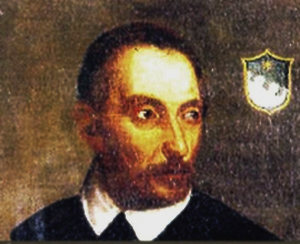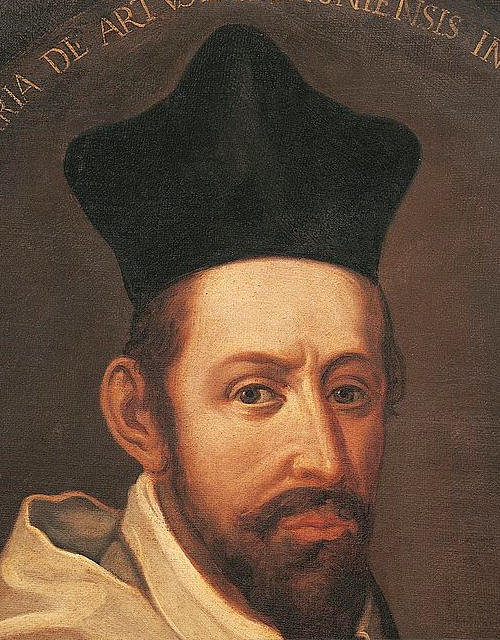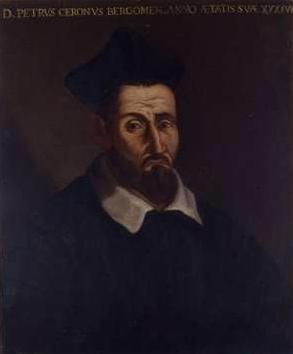|
Canzonette
In music, a canzonetta (; pl. canzonette, canzonetti or canzonettas) is a popular Italian secular vocal composition that originated around 1560. Earlier versions were somewhat like a madrigal but lighter in style—but by the 18th century, especially as it moved outside of Italy, the term came to mean a song for voice and accompaniment, usually in a light secular style. Origins in Italy In its earliest form, the canzonetta was closely related to a popular Neapolitan form, the villanella. The songs were always secular, and generally involved pastoral, irreverent, or erotic subjects. The rhyme and stanza schemes of the poems varied but always included a final "punch line." Typically the early canzonetta was for three unaccompanied voices, moved quickly, and shunned contrapuntal complexity, though it often involved animated cross-rhythms. It was fun to sing, hugely popular, and quickly caught on throughout Italy, paralleling the madrigal, with which it later began to interact. ... [...More Info...] [...Related Items...] OR: [Wikipedia] [Google] [Baidu] |
Hans Leo Hassler
Hans Leo Hassler (in German, Hans Leo Haßler) (baptized 26 October 1564 – 8 June 1612) was a German composer and organist of the late Renaissance and early Baroque eras, elder brother of less known composer Jakob Hassler. He was born in Nürnberg and died in Frankfurt am Main. Biography Hassler was born in Nürnberg and baptized on 26 October 1564, receiving his first instruction in music from his father, the organist Isaak Hassler. In 1584, Hassler became the first of many German composers of the time who went to Italy to continue their studies; he arrived in Venice during the peak of activity of the Venetian school, the composers who wrote in the resplendent polychoral style, which was soon to become popular outside its native city. Hassler was already familiar with some of this music, as numerous prints had circulated in Germany due to the interest of Leonhard Lechner, who was associated with Orlandus Lassus in Munich. While in Venice, Hassler became friends with G ... [...More Info...] [...Related Items...] OR: [Wikipedia] [Google] [Baidu] |
Orazio Vecchi
Orazio Vecchi (6 December 1550 (baptized) in Modena – 19 February 1605) was an Italian composer of the late Renaissance. He is most famous for his madrigal comedies, particularly ''L'Amfiparnaso''. Life He was born in Modena, and studied with Salvatore Essenga, a Servite monk there. In addition he prepared for holy orders with early education at the Benedictine monastery, and took holy orders sometime before 1577. By the end of the 1570s he was well-connected with the composers of the Venetian school (for example Claudio Merulo and Giovanni Gabrieli) since he collaborated with them in writing a sestina for a ducal marriage. During this period he accompanied Count Baldassare Rangoni on his travels, going to Bergamo and Brescia. He was ''maestro di cappella'' (director of music) at the Salò cathedral between 1581 and 1584. Following this, he was the choirmaster at the cathedral of Reggio Emilia, until 1586. In that year he moved to Correggio where he was ... [...More Info...] [...Related Items...] OR: [Wikipedia] [Google] [Baidu] |
Canzonetta In A Minor, BuxWV 225
In music, a canzonetta (; pl. canzonette, canzonetti or canzonettas) is a popular Italian secular vocal composition that originated around 1560. Earlier versions were somewhat like a madrigal but lighter in style—but by the 18th century, especially as it moved outside of Italy, the term came to mean a song for voice and accompaniment, usually in a light secular style. Origins in Italy In its earliest form, the canzonetta was closely related to a popular Neapolitan form, the villanella. The songs were always secular, and generally involved pastoral, irreverent, or erotic subjects. The rhyme and stanza schemes of the poems varied but always included a final "punch line." Typically the early canzonetta was for three unaccompanied voices, moved quickly, and shunned contrapuntal complexity, though it often involved animated cross-rhythms. It was fun to sing, hugely popular, and quickly caught on throughout Italy, paralleling the madrigal, with which it later began to interact. ... [...More Info...] [...Related Items...] OR: [Wikipedia] [Google] [Baidu] |
Giovanni Maria Nanino
Giovanni Maria Nanino (also Nanini; 1543 or 1544 – 11 March 1607) was an Italian composer and teacher of the late Renaissance. He was a member of the Roman School of composers, and was the most influential music teacher in Rome in the late 16th century. He was the older brother of composer Giovanni Bernardino Nanino. Life Nanino was born in Tivoli, and served as a boy soprano in the cathedral at Viterbo. In the 1560s he probably studied with Palestrina at San Luigi de' Francesi in Rome; at any rate, he became ''maestro di cappella'' there after Palestrina left. In 1577 he joined the papal choir as a tenor, and remained in the choir for the rest of his life, occasionally taking the rotating post of ''maestro di cappella''. During the 1590s he was renowned as a teacher; he and his brother established what is thought to be the first Italian-run public music school in Rome and many future composers studied with him and sang in his choirs, including Felice Anerio, Antonio Brune ... [...More Info...] [...Related Items...] OR: [Wikipedia] [Google] [Baidu] |
Giovanni Artusi
Giovanni Maria Artusi (c. 154018 August 1613) was an Italian music theory, theorist, composer, and writer. Artusi fiercely condemned the new musical innovations that defined the early Baroque music, Baroque style developing around 1600 in his treatise ''L'Artusi, overo Delle imperfettioni della moderna musica'' [Artusi, or On the Imperfections of Modern Music]. He was also a scholar and cleric at the Congregation Santissimo Salvatore, Bologna, and remained throughout his life devoted to his teacher Gioseffo Zarlino (the principal music theorist of the late sixteenth century). When Vincenzo Galilei first attacked Zarlino in the ''Dialogo'' of 1581, it provoked Artusi to defend his teacher and the style he represented. In 1600 and 1603, Artusi attacked the "crudities" and "license" shown in the works of a composer he initially refused to name (it was Claudio Monteverdi). Monteverdi replied in the introduction to his fifth book of madrigals (1605) with his discussion of the division ... [...More Info...] [...Related Items...] OR: [Wikipedia] [Google] [Baidu] |
Adriano Banchieri
Adriano Banchieri (Bologna, 3 September 1568 – Bologna, 1634) was an Italian composer, music theorist, organist and poet of the late Renaissance and early Baroque eras. He founded the Accademia dei Floridi in Bologna. Biography He was born and died in Bologna (then in the Papal States). In 1587 he became a monk of the Benedictine order, taking his vows in 1590, and changing his name to Adriano (from Tommaso). One of his teachers at the monastery was Gioseffo Guami, who had a strong influence on his style. Like Orazio Vecchi he was interested in converting the madrigal to dramatic purposes. Specifically, he was one of the developers of a form called "madrigal comedy" — unstaged but dramatic collections of madrigals which, when sung consecutively, told a story. Formerly, madrigal comedy was considered to be one of the important precursors to opera, but most music scholars now see it as a separate development, part of a general interest in Italy at the time in c ... [...More Info...] [...Related Items...] OR: [Wikipedia] [Google] [Baidu] |
Luca Marenzio
Luca Marenzio (also Marentio; October 18, 1553 or 1554 – August 22, 1599) was an Italian composer and singer of the late Renaissance. He was one of the most renowned composers of madrigals, and wrote some of the most famous examples of the form in its late stage of development, prior to its early Baroque transformation by Monteverdi. In all, Marenzio wrote around 500 madrigals, ranging from the lightest to the most serious styles, packed with word-painting, chromaticism, and other characteristics of the late madrigal style. Marenzio was influential as far away as England, where his earlier, lighter work appeared in 1588 in the ''Musica Transalpina'', the collection that initiated the madrigal craze in that country. Marenzio worked in the service of several aristocratic Italian families, including the Gonzaga, Este, and Medici, and spent most of his career in Rome. Early years According to biographer Leonardo Cozzando, writing in the late 17th century, Marenzio was born at ... [...More Info...] [...Related Items...] OR: [Wikipedia] [Google] [Baidu] |
Joseph Haydn
Franz Joseph Haydn ( , ; 31 March 173231 May 1809) was an Austrian composer of the Classical period (music), Classical period. He was instrumental in the development of chamber music such as the string quartet and piano trio. His contributions to musical form have led him to be called "Father of the Symphony" and "Father of the String quartet, String Quartet". Haydn spent much of his career as a court musician for the wealthy Esterházy family at their Eszterháza Castle. Until the later part of his life, this isolated him from other composers and trends in music so that he was, as he put it, "forced to become original". Yet his music circulated widely, and for much of his career he was the most celebrated composer in Europe. He was Haydn and Mozart, a friend and mentor of Mozart, Beethoven and his contemporaries#Joseph Haydn, a tutor of Beethoven, and the elder brother of composer Michael Haydn. Biography Early life Joseph Haydn was born in Rohrau, Austria, Rohrau, Habsburg ... [...More Info...] [...Related Items...] OR: [Wikipedia] [Google] [Baidu] |
Marianne Sessi
Marianne Sessi Natorp (died 10 March 1847) was an Italian soprano and composer. Her birth date is listed as 1770,1771, 1773, or 1776 in various sources. She was best known as a member of the musical Sessi dynasty and a renowned operatic soprano who performed and composed as Marianne Sessi. Life Sessi was born in Rome to Franziska Lepri and Giovanni Sessi, who were both singers, as were Sessi’s four younger sisters Imperatrice, Anna-Maria, Victoria, and Carolina. Sessi studied voice with her father and debuted at the Italian Opera in Vienna during the 1792–93 season. In 1794 she married Franz Joseph Edler von Natorp, who became a baron in 1801. She stopped performing in 1796, but returned to the stage in 1805 after the couple divorced, singing in operas by Domenico Cimarosa, Simon Mayr, Wolfgang Amadeus Mozart, Giovanni Paisiello, Antonio Salieri, and Niccolò Zingarelli. In 1807, the Academy of Fine Arts in Florence awarded Sessi a gold medal. She toured internationally, singi ... [...More Info...] [...Related Items...] OR: [Wikipedia] [Google] [Baidu] |
Pietro Cerone
Pietro Cerone (1566–1625) was an Italian music theorist, singer and priest of the late Renaissance. He is most famous for an enormous music treatise he wrote in 1613, which is useful in the studying compositional practices of the 16th century. Life Cerone was born in Bergamo. While Italian, he spent most of his life in Spanish-dominated Naples, Sardinia, and later in Spain: he did most of his writing in Spanish. He was unusual in being an Italian musician in Spain; far more often in the 16th century, Spanish musicians went to Italy, as in the case of Victoria. In 1603 he returned to Naples, where he was a priest and singer until his death. It was in Naples that he wrote his two most famous treatises. Writings The first of these, in Italian, was ''Le regole più necessarie per l'introduzione del canto fermo'', which he published in 1609. It was a didactic and practical work on singing plainsong, which he probably used in his work at the Neapolitan church of Ss Annunziata. ... [...More Info...] [...Related Items...] OR: [Wikipedia] [Google] [Baidu] |
Lodovico Grossi Da Viadana
Lodovico Grossi da Viadana (usually Lodovico Viadana, though his family name was Grossi; c. 1560 – 2 May 1627) was an Italian composer, teacher, and Franciscan friar of the Order of Friars Minor Observants. He was the first significant figure to make use of the newly developed technique of figured bass, one of the musical devices which was to define the end of the Renaissance and beginning of the Baroque eras in music. Life He was born in Viadana, a town in the province of Mantua (Italy). According to a document dating from about 150 years after his death, he was a member of the Grossi family but took the name of his birth city, Viadana, when he entered the order of the Minor Observants prior to 1588. Though there is no contemporary evidence, it has been claimed that he studied with Costanzo Porta, becoming choirmaster at the cathedral in Mantua by 1594. In 1597 he went to Rome, and in 1602 he became choirmaster at the cathedral of San Luca in Mantua. He held a succession of ... [...More Info...] [...Related Items...] OR: [Wikipedia] [Google] [Baidu] |
Fugue
In music, a fugue () is a contrapuntal compositional technique in two or more voices, built on a subject (a musical theme) that is introduced at the beginning in imitation (repetition at different pitches) and which recurs frequently in the course of the composition. It is not to be confused with a ''fuguing tune'', which is a style of song popularized by and mostly limited to early American (i.e. shape note or "Sacred Harp") music and West Gallery music. A fugue usually has three main sections: an exposition, a development and a final entry that contains the return of the subject in the fugue's tonic key. Some fugues have a recapitulation. In the Middle Ages, the term was widely used to denote any works in canonic style; by the Renaissance, it had come to denote specifically imitative works. Since the 17th century, the term ''fugue'' has described what is commonly regarded as the most fully developed procedure of imitative counterpoint. Most fugues open with a short ma ... [...More Info...] [...Related Items...] OR: [Wikipedia] [Google] [Baidu] |






